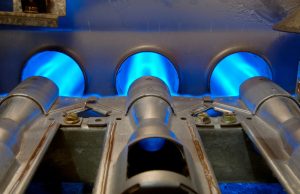Your gas furnace has a lot of different components. Of course, the average homeowner is not an HVAC expert, and there’s no need for you to know everything about your furnace. But it is important to be aware of safety concerns! There’s a component called the heat exchanger which needs to be kept in good condition for furnace safety. What do you need to know about it? We’ll tell you.
Furnace Components Simplified
Some of the components in your furnace are there for the purpose of generating the heat that you need from it. These include gas pipes, the ignition system or pilot light, and the burner. Some of the components in your furnace are there to move that heat to every place that it’s needed. These include blower fans and the motors that power them.
Some furnace components are there strictly as safety precautions. They don’t help the furnace to operate, they simply shut it down if there’s any sort of hazard. For example, the limit switch will turn off your furnace if it starts to overheat inside, so there won’t be a fire. The flame sensor will simply not allow gas to be released if it can’t sense that a flame is there to burn it, which protects you from gas leaks.
Your Heat Exchanger
The heat exchanger doesn’t fall neatly into either one of these categories. Instead, it helps with both jobs! When gas is burned, hot combustion gasses are produced. You need the heat, but you can’t be exposed to the gasses themselves, which contain carbon monoxide. That’s where the heat exchanger comes in.
The combustion gasses enter the heat exchanger, a metal chamber with a rippling shape and a lot of surface area. Air passes around the outside of that surface area and heats up, to be blown through your ducts and heat your home. The combustion gasses, with most of their heat now used up, are released through your furnace’s vent system, out of the house.
Risks of Heat Exchanger Damage
The biggest threat to the heat exchanger is a side effect of its job. Expansion and contraction happen constantly as the metal of the heat exchanger changes temperature. Over the years, this can weaken the metal and cause it to crack. Corrosion is another threat because in addition to heat and exhaust, a gas furnace produces condensation which can eventually lead to rusting.
Keep Your Heat Exchanger Healthy
In order to keep yourself and your family healthy, you need to keep that heat exchanger healthy! That means two different things. First, take good care of your heating system by having furnace maintenance done every single year. Your technician will inspect your heat exchanger and let you know if it needs to be replaced. Second, get repairs done immediately if you suspect a heat exchanger problem.
How can you tell if your heat exchanger might be cracked or damaged? Keep an eye out for excess moisture, corrosion, or soot inside the furnace cabinet. Look at the flames: they should be steady and always blue. Notice if an odd chemical smell is coming from your furnace. And use your ears: a cracked heat exchanger often makes clicking sounds during the cool-down phase of the heating cycle.
Anytime you need gas furnace service in Chisholm, MN, we’ve got you covered.
Reach out to Mesaba Heating & Air Conditioning today. Service to you is success to us!

